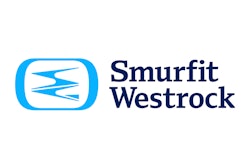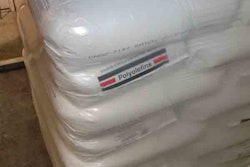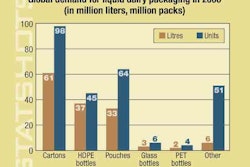Early in the development phase, starting with ideation, a designer needs a sense of understanding that the choices made will impact the whole supply chain. The product should be designed to be safe to make in the converting process, safe to use, and function as intended by the customer who will ultimately be able to benefit from the sustainability efficiencies utilized in the product’s manufacturing.
In operations, sustainable manufacturing is defined as maximizing the efficiency of processes by:
• obtaining the chosen raw materials in a responsible manner;
• using manufacturing processes that reduce the environmental impacts, improve productivity/efficiency, and create a safe work environment for employees; and
• influencing positive environmental and social prosperity to the local communities in which they operate
Obtaining the chosen raw material
In order to achieve sustainability from a sourcing perspective, the first step is to select raw materials with the least environmental impact from responsible suppliers. Sometimes, and especially when first introduced, these materials do not work as well as those they are intended to replace. This was true for water-based inks, fountain solutions without alcohol, and adhesives with low solvent content products that have all since seen major improvements and become standards in the practice of sustainable packaging.
Environmental challenges in packaging manufacturing include minimizing waste while focusing on the importance of energy efficiency through all stages of operations, including converting, fulfilling, and transportation. Safe work procedures are critical in each step of the process.
Selecting the appropriate materials in the converting process is critical in order to reuse fluids, reduce energy consumption, and especially to minimize overall waste by using as much of the raw material as possible and recycling essentially all waste.
Additionally, environmental effects can be reduced by the mode of transportation. In instances when the origin and destination are not rail served, utilizing the intermodal process—using trucks at the beginning and end, and loading the trailers onto rail cars for the majority of the journey—has helped manufacturers greatly reduce traffic on the roads and minimize harmful emissions from internal combustion engines.
Environmental/social prosperity
But it’s not enough for a manufacturer to say that they recycle waste, conserve water, or use renewable energy. Leadership roles in industry organizations like the Sustainable Packaging Coalition, and certification and recognition from third-party organizations like the Sustainable Forestry Initiative and the Forestry Stewardship Council lend credibility to those statements. Organizations such as the Chicago Climate Exchange and the Dow Jones Sustainability Indexes have members that have made an open, honest, and public commitment to sustainable business practices and will go on record to share best practices and explore opportunities for improvement. For consumers and customers of packagers, these organizations help to ensure that the packaging solutions they purchase are manufactured through processes that benefit the bottom-line, society, and the environment.
Sustainability is an important topic during sourcing, design and engineering, and manufacturing of packaging to ensure the availability of the earth’s natural resources for future generations. While each stage of the packaging chain presents multiple opportunities, the core of the problem, and the opportunity, lies with the package design. From that point, all of the other sustainability efforts can be utilized to their greatest potential. It is the responsibility of packagers to continue to push the boundaries and develop new means for minimizing the environmental footprint of packaging.
Mead Westvaco is proud to offer customers such products as Kraftpack®, the lowest density paperboard in the
Barbara McCutchan is director of enterprise stewardship and sustainability at MeadWestvaco Corporation. She welcomes your comments, and can be reached at [email protected].


























